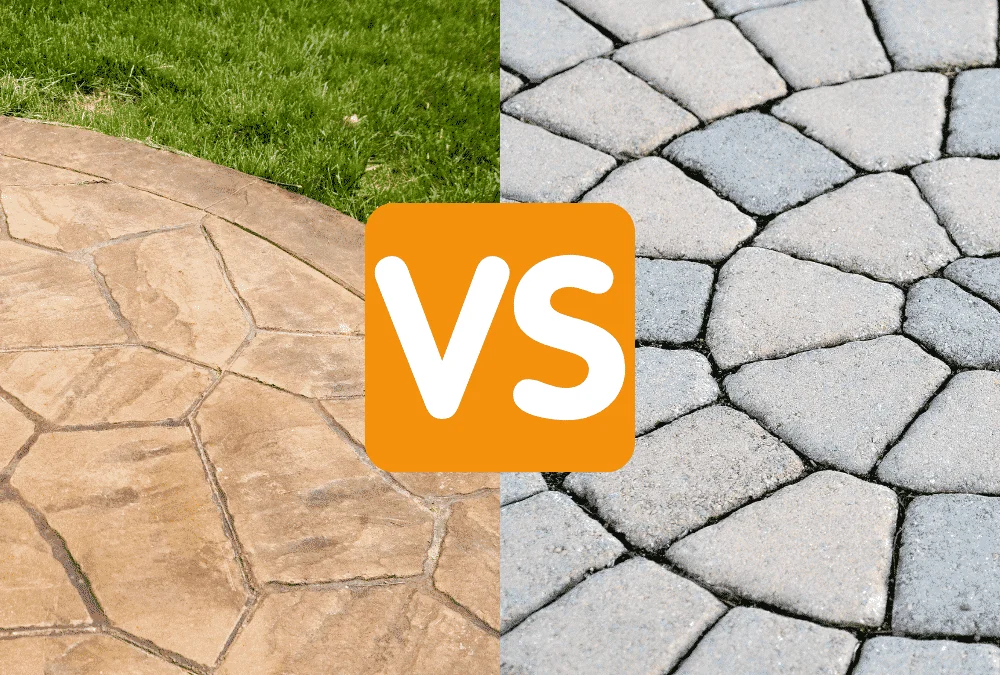
Stamped Concrete vs Pavers: Which is Right for Your Outdoor Space?
When it comes to enhancing the beauty and functionality of your outdoor space, choosing between stamped concrete and pavers can be a challenging decision. Both options offer unique advantages and aesthetics, but understanding their differences is crucial in determining which is the right choice for your specific needs. In this blog post, we will compare stamped concrete and pavers, exploring their characteristics, benefits, and factors to consider when selecting the ideal material for your outdoor project.
Aesthetic Appeal and Design Options:
Both stamped concrete and pavers offer a multitude of design options, enabling you to personalize your outdoor space according to your unique style and preferences. Stamped concrete can replicate the appearance of various materials such as brick, stone, or slate, offering an affordable alternative to their natural counterparts. It provides a seamless and continuous surface, ideal for creating a sleek and modern look. On the other hand, pavers come in various shapes, sizes, and colors, providing endless design possibilities. They can be arranged in intricate patterns, creating a more traditional or rustic aesthetic. Take into account the architectural style of your home and the desired ambiance of your outdoor space. This will help you decide whether the seamless appeal of stamped concrete or the versatility of pavers better matches your vision.
Durability and Longevity:
Durability is a crucial factor when selecting materials for outdoor spaces, as they are exposed to weather conditions, heavy foot traffic, and other environmental factors. Both stamped concrete and pavers offer exceptional durability, but their durability can depend on many factors. With proper installation and maintenance, stamped concrete has the potential to endure for decades, demonstrating resilience against temperature fluctuations, UV exposure, and general wear and tear. Pavers, known for their individual units, are highly resistant to cracking. They can be easily replaced if a single unit gets damaged. However, the joints between pavers may require periodic maintenance to prevent shifting or weed growth. Consider the level of maintenance you’re willing to commit to and the climate in your area to assess which material offers the desired durability for your outdoor space.
Installation and Cost:
The installation process and cost of stamped concrete and pavers differ. Stamped concrete requires pouring and stamping the concrete surface, followed by coloring and sealing. It typically involves less labor and is more cost-effective compared to pavers. Pavers, on the other hand, require meticulous installation, including excavation, base preparation, and precise placement of each unit. This intricate installation process often results in higher labor costs. The choice of stamped concrete or pavers, along with their specific type and quality, can lead to variations in material costs. Consider your budget and the complexity of your project to determine which option aligns better with your financial resources.
Maintenance and Repair:
Maintenance and repair requirements should be evaluated when choosing between stamped concrete and pavers. Stamped concrete requires minimal maintenance, usually limited to periodic cleaning and resealing to maintain its appearance and protect it from stains and color fading. Pavers may require occasional releveling of individual units, weed control in the joints, and sealing to protect against staining and enhance their longevity. In terms of repairs, stamped concrete can be more challenging to fix as cracks may be more visible. Pavers, on the other hand, allow for easy replacement of damaged units without affecting the overall appearance. Consider your willingness to perform regular maintenance and the ease of repairs when deciding on the most suitable material for your outdoor space.
Climate Considerations:
Climate plays a significant role in determining the ideal material for your outdoor space. Stamped concrete, when properly installed and sealed, can withstand various weather conditions, including freezing temperatures and heat. Pavers, due to their individual units and joint spaces, allow for water drainage and are less susceptible to cracking caused by freeze-thaw cycles. This makes pavers an excellent choice for regions with extreme weather conditions. Consider the climate in your area, including temperature fluctuations, rainfall, and the likelihood of freeze-thaw cycles, to select the material that can withstand and perform well in your specific environment.
Overall
Choosing between stamped concrete and pavers for your outdoor space requires careful consideration of aesthetic preferences, durability, installation costs, maintenance requirements, and climate factors. Both options offer unique advantages, and the right choice ultimately depends on your specific needs and priorities. By assessing these factors and consulting with professionals, you can make an informed decision that results in a stunning and functional outdoor space that brings you years of enjoyment.